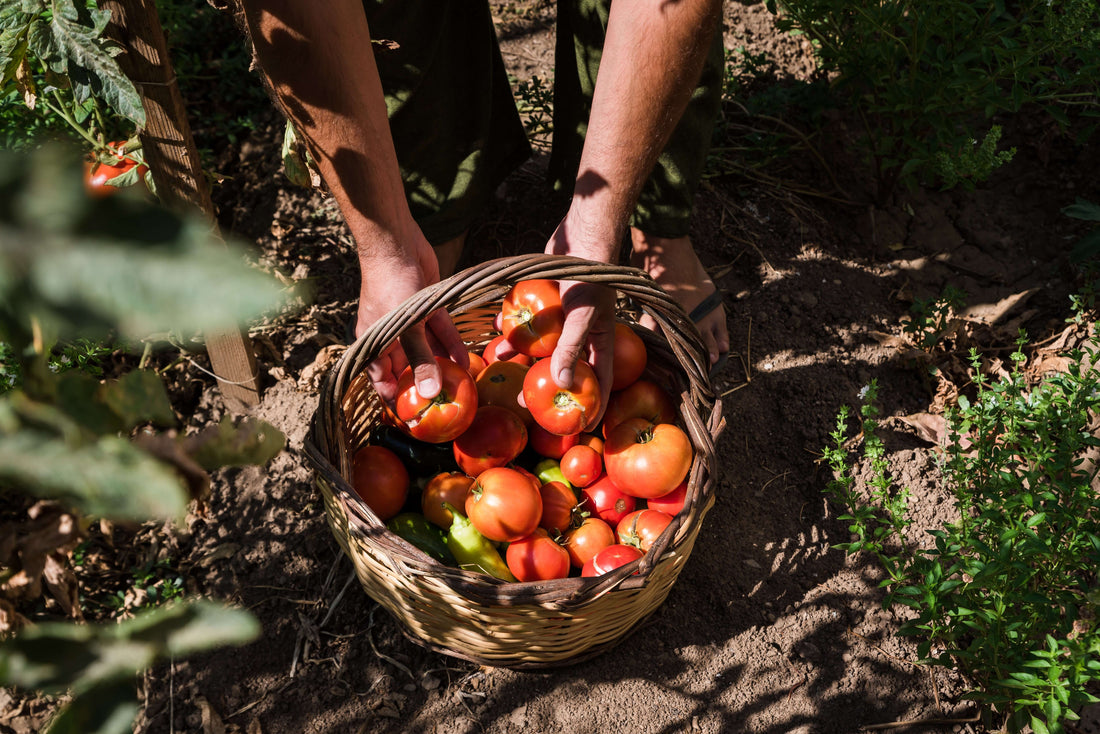
Guide to Planting Organic Tomatoes and Peppers in the United States
Share
Topics Covered:
-
Site Selection and Preparation
-
Choosing Organic Inputs: Fertilizer, Worm Castings, and Dairy Compost
-
Seed Selection and Germination
-
Transplanting and Soil Management
-
Watering Practices
-
Pest and Disease Management
-
Harvesting and Post-Harvest Handling
1. Site Selection and Preparation
Tomatoes and peppers thrive in full sun with at least 6-8 hours of direct light daily. Choose a site with well-drained soil and good air circulation to reduce disease risk. Conduct a soil test before planting to understand nutrient needs.
Clear the area of weeds and debris. Use broadforks or no-till practices to prepare the soil to maintain soil structure and microbial life, essential in organic farming systems.
For high-quality organic soil amendments and advice, visit Soil Seed and Water.
2. Choosing Organic Inputs: Fertilizer, Worm Castings, and Dairy Compost
Organic Fertilizer
Select a certified organic, balanced fertilizer to ensure steady, healthy growth. Fertilizer should be high in phosphorus for root development and moderate in nitrogen to avoid overly lush, weak plants.
Worm Castings
Incorporate worm castings, such as Mikey's Worm Poop Organic Dairy Vermicompost Worm Castings, to boost microbial activity, improve soil structure, and provide slow-release nutrients.
Dairy Compost
Dairy compost enriches soil organic matter, improves water retention, and provides a broad spectrum of nutrients. It should be fully composted to eliminate pathogens and weed seeds.
Blend these inputs thoroughly into the top 6-8 inches of soil before planting.
3. Seed Selection and Germination
Choose organic, non-GMO seeds suitable for your USDA hardiness zone. Heirloom varieties are favored for flavor and seed-saving potential.
Start seeds indoors 6-8 weeks before the last expected frost. Use a sterile seed-starting mix. Keep the soil temperature between 70°F and 80°F for optimal germination.
Once seedlings develop their second set of true leaves, apply a diluted organic fertilizer or a microbial inoculant like SK Microsource to stimulate robust early growth.
4. Transplanting and Soil Management
Harden off seedlings by gradually exposing them to outdoor conditions over 7-10 days.
Plant tomatoes deep, burying two-thirds of the stem to promote strong root development. Peppers should be planted at the same depth they were in their containers.
Mulch with straw or shredded leaves to regulate soil temperature, retain moisture, and suppress weeds.
Side-dress with dairy compost midway through the growing season to replenish nutrients.
5. Watering Practices
Tomatoes and peppers require consistent moisture. Use drip irrigation or soaker hoses to deliver water directly to the root zone, minimizing leaf wetness and reducing disease risk.
Water deeply once or twice a week, depending on rainfall and soil conditions, to encourage deep root systems.
6. Pest and Disease Management
Employ an integrated pest management (IPM) approach:
-
Encourage beneficial insects by planting companion flowers like marigolds and basil.
-
Handpick pests such as hornworms and aphids.
-
Use organic-approved sprays like neem oil or insecticidal soaps only when necessary.
Disease prevention includes crop rotation, proper spacing, and using resistant varieties. Remove and dispose of infected plants immediately.
7. Harvesting and Post-Harvest Handling
Harvest tomatoes when they are fully colored and slightly soft to the touch. Peppers can be harvested green or left to ripen to their mature color for maximum sweetness.
Use clean, sharp tools to harvest to prevent plant damage. Handle fruits gently to avoid bruising.
Store tomatoes at room temperature out of direct sunlight. Peppers can be refrigerated for up to 1-2 weeks.
By adhering to these organic practices and using premium inputs like those available at Soil Seed and Water, you can grow vibrant, healthy tomatoes and peppers that are rich in flavor and nutrition.
